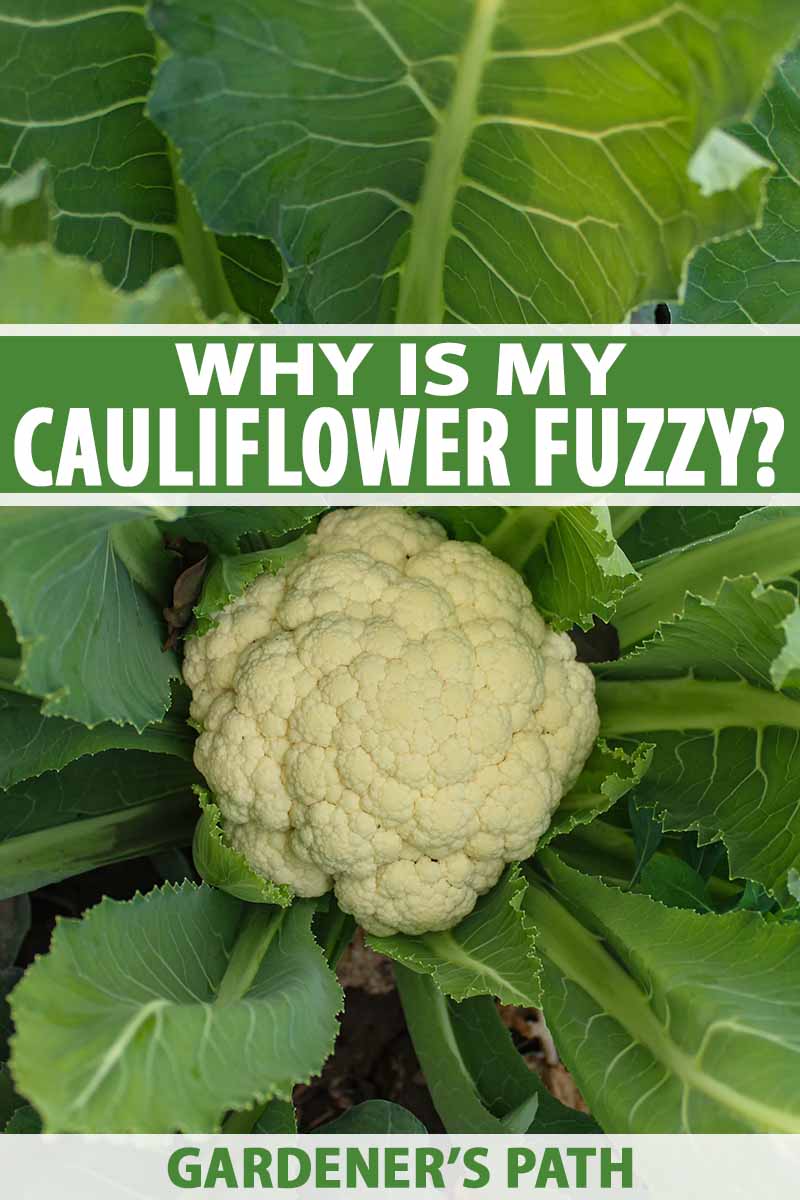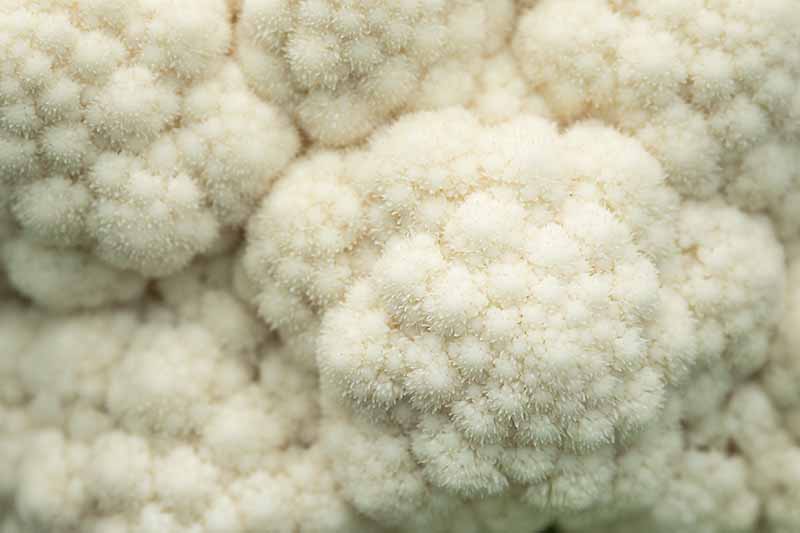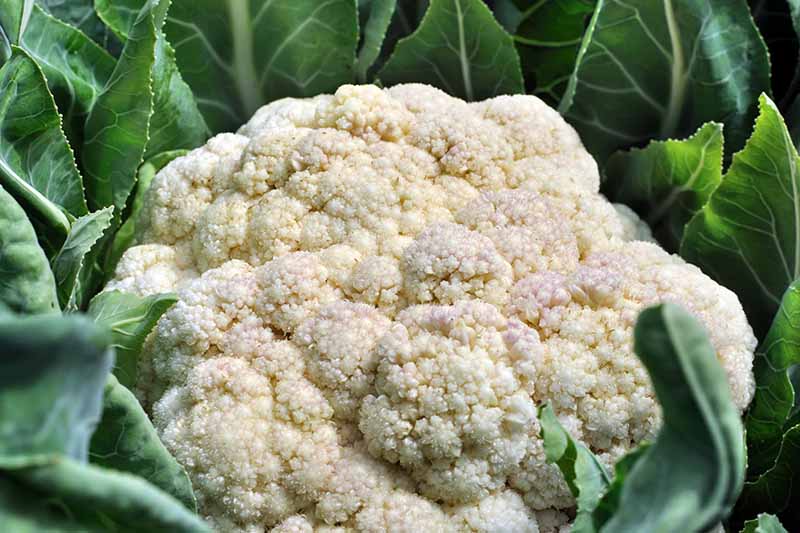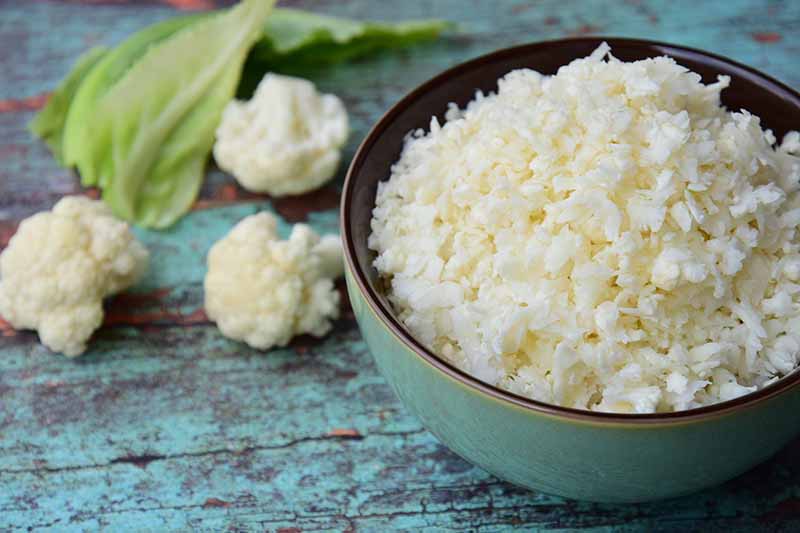It requires optimal conditions, including nutrient-dense soil, consistent moisture with good drainage, cool temperatures during head maturation, and minimal temperature fluctuations. Without an ideal environment, a variety of head disorders may occur. In this article, we will discuss why heads that should be smooth sometimes look fuzzy. We link to vendors to help you find relevant products. If you buy from one of our links, we may earn a commission.
Name That Fuzz
When all or part of a developing cauliflower head exhibits a fuzzy, hairy, velvety appearance that looks a little like cooked rice, it is referred to as – wait for it – ricing.
Wow. I could have thought of that. Yet, as simple as it sounds, it has a profoundly negative effect on the value of a commercial crop. Let’s learn how this disorder happens and what it means to the home gardener.
What Went Wrong?
While I’m not a botanist, the gist of what’s happening is this: An environmental trigger causes a plant to switch from vegetative growth, or leaf production, to reproductive growth, or curd formation, or vice versa. The likely culprit is a spike in temperatures that top out at 80°F around the time of curd formation.
The stressed and confused plant tries to flower when it should be producing a curd, or reverts back to vegetative growth in the middle of curd formation. The physical manifestation of this is a fuzzy appearance. Other heat-related issues may appear simultaneously. These include leaves growing between the florets, a pink or purple hue, yellowing, sun-scorching, and the formation of tiny florets in what is known as buttoning. Contributing factors may include excess moisture in the air or soil, an overabundance of nitrogen in the soil, and drastic temperature fluctuations. Let’s learn how to avoid this phenomenon. Let’s find out!
- Purchase seeds that are suited to your USDA Hardiness Zone.
- Plant early- and late-maturing varieties as directed so that heads form during the coolest weather, either before the summer heats up, or after it cools down.
- Prevent moisture buildup with well-draining soil.
- Space seedlings per seed packet instructions to allow for the air circulation needed to keep humidity low.
- Use only well-balanced fertilizers. Avoid those heavy in nitrogen (N), to avoid excess vegetative growth.
- Apply mulch to help maintain even moisture and keep the ground cool during temperature spikes.
- Water early, especially during warm weather, to keep plants cool and hydrated all day.
- Limit watering during rainy periods to prevent waterlogged soil.
- Blanch white cauliflower heads to minimize sun damage by shielding them from direct sunlight.
- Use shade cloth to protect plants from the intense UV rays of a heatwave. Now that you know what the fuzziness is and how to avoid it, the big question is whether or not affected plants are edible.
Can I Eat It?
Here’s what we’ve learned so far: When a maturing curd is adversely affected by its natural environment, it may exhibit fuzziness called ricing. There may also be other heat-related anomalies present, such as a pink, purple, or yellow hue; scorching; or buttoning.
In and of itself, the fuzz does not render a curd inedible, nor does it change its flavor. However, the presence of other heat-related anomalies may cause bitterness, and sun-scorched portions may require removal. Barring pest infestation, or signs of disease – like black or brown splotching and a mushy consistency – you may consume cauliflower that rices due to environmental adversity. Even when it’s a little fuzzy, cauliflower is an excellent source of nutrients that’s loaded with vitamins B, C, and K, and healthy dietary fiber.
Rice, Rice, Baby
Speaking of ricing, besides the fuzz on growing curds, there’s a whole new food craze these days – cauliflower rice.
If you aren’t familiar with it already , it’s grated cauliflower that you can prepare as you would rice, only without the carbs. For a variety of additional nutritious and tasty ways to use cauliflower, visit our sister site, Foodal, and find recipes for fabulous dishes like easy vegan cauliflower Buffalo wings with lime, and cauliflower and chard fritters with spicy yogurt cilantro sauce. For more information about growing cauliflower in your garden, you’ll need these guides next:
13 of the Best Cauliflower Companions How to Grow Cauliflower in Containers When and How to Harvest Cauliflower
© Ask the Experts, LLC. ALL RIGHTS RESERVED. See our TOS for more details. Originally published on February 16, 2020. [lastupdated]. Uncredited photos: Shutterstock.





